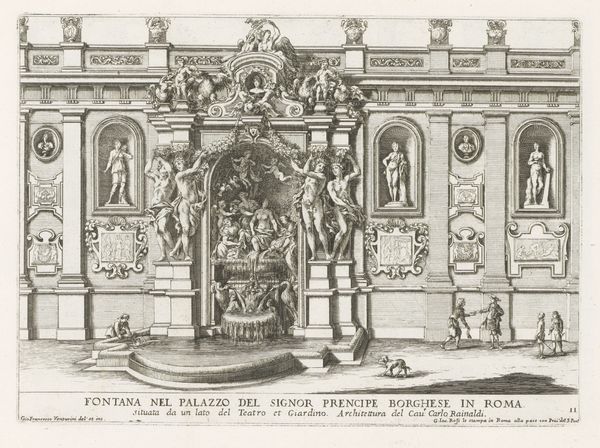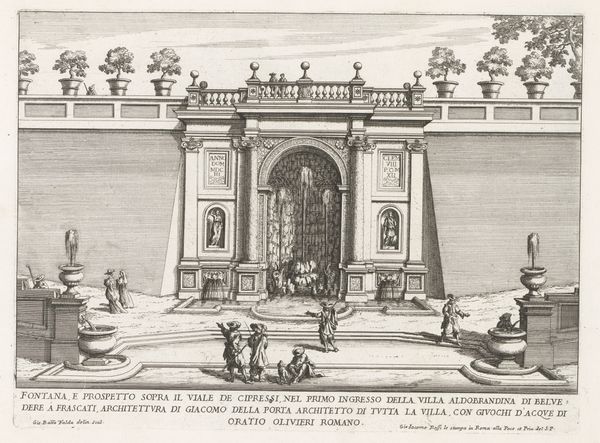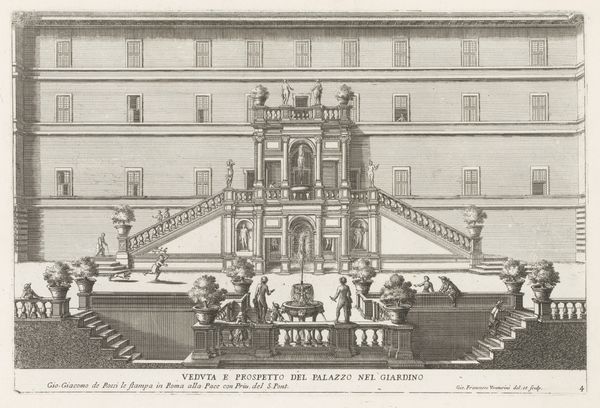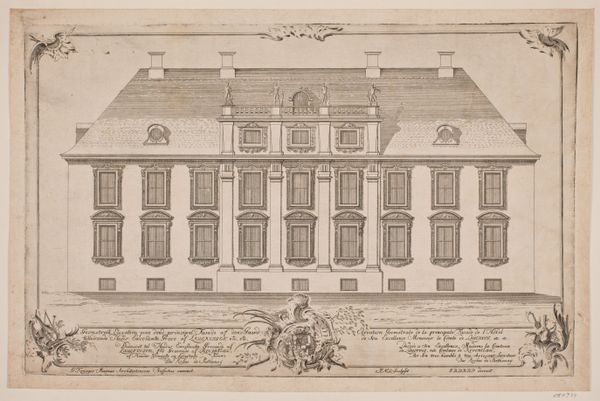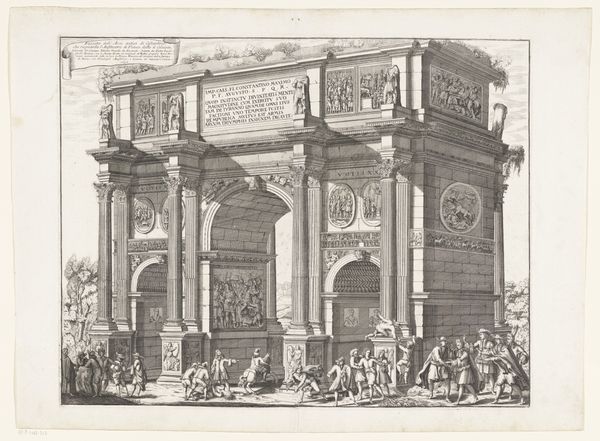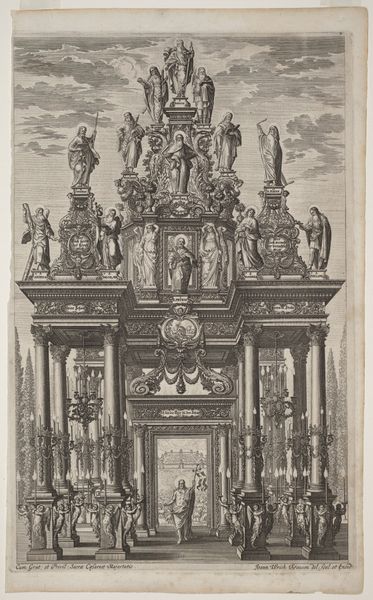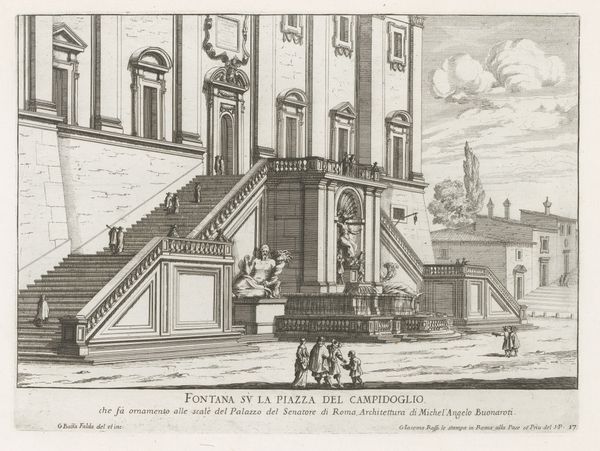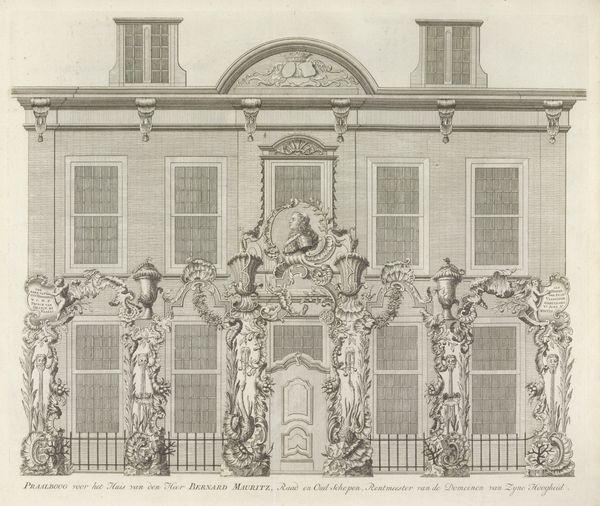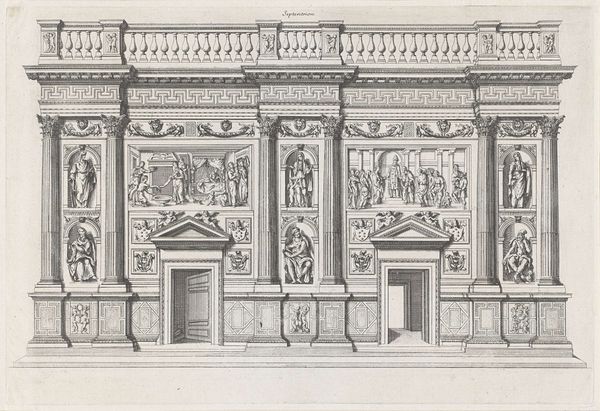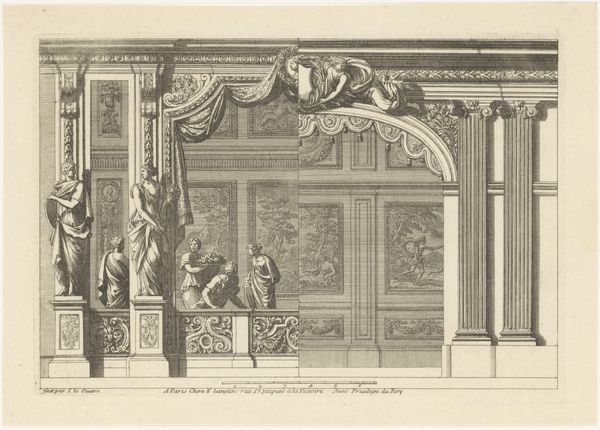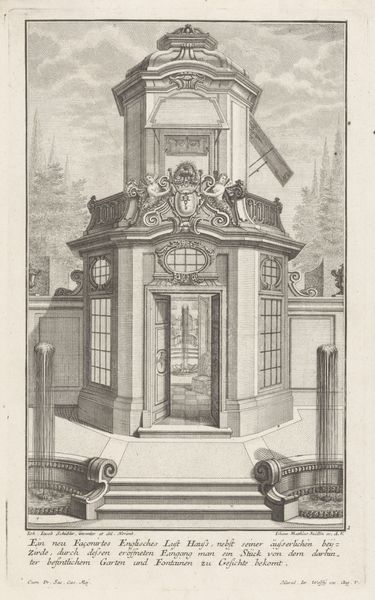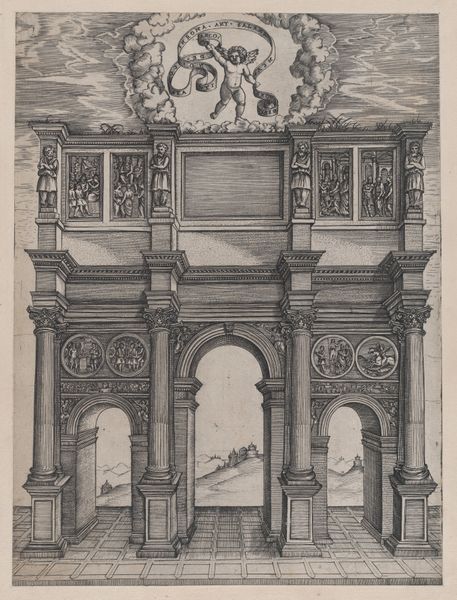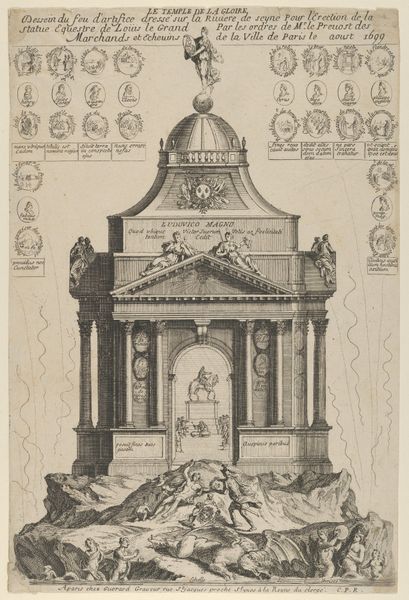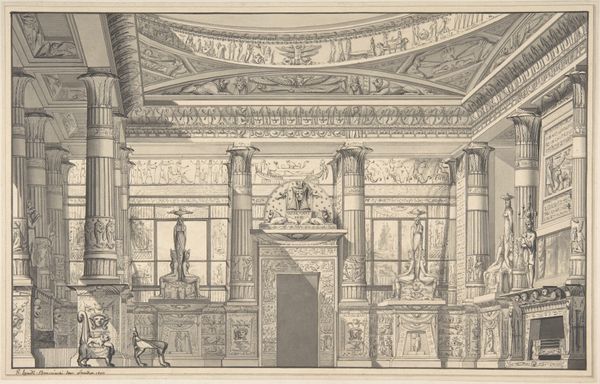
Nymphaeum in de binnenplaats van het Palazzo Borghese te Rome 1653 - 1691
0:00
0:00
print, engraving, architecture
#
baroque
# print
#
form
#
11_renaissance
#
geometric
#
cityscape
#
history-painting
#
engraving
#
architecture
Dimensions: height 217 mm, width 300 mm
Copyright: Rijks Museum: Open Domain
Editor: Here we have Giovanni Francesco Venturini's engraving, "Nymphaeum in de binnenplaats van het Palazzo Borghese te Rome," created between 1653 and 1691. It feels very formal and theatrical to me, like a stage set for a grand performance. The details are incredible. What catches your eye when you look at this piece? Curator: Oh, my dear, it transports me! It's not just a depiction; it's an *experience*. I feel the cool spray of that nonexistent water on my skin. Can you imagine being there? It whispers tales of power and patronage – a prince showcasing his cultivated taste with cascading water and muscle-bound gods frozen in stone. What do you think they signify? Are they showing off strength or beauty? Editor: I guess it’s a mix of both? The strong figures definitely add to that sense of power you mentioned. I didn’t pick up on all the potential layers! It does look pretty impressive... Curator: Impressive, yes, but look closer! See how the rigid geometry of the architecture contrasts with the fluid, almost chaotic, energy of the water feature. And then consider that perspective! Venturini isn’t just showing us *what* is there but choreographing *how* we see it. It's more than just a pretty fountain. It suggests layers, almost inviting us into this little moment in time, with our own imagined interactions. Editor: That's so interesting, I hadn't really considered that tension between order and chaos. I mostly saw it as just a detailed representation of the space. Now I’m starting to wonder how "real" is this scene is. It seems like this space, captured in an engraving, encourages the viewer to engage more fully with architecture than would a purely functional photograph of a real place! Curator: Exactly! It reminds us art isn't always a window; sometimes it's a hall of mirrors. It shows the way to consider what we really see, compared to what we truly believe we may be experiencing! I hadn't quite come to that realization myself, though. Thank you for pointing it out!
Comments
No comments
Be the first to comment and join the conversation on the ultimate creative platform.
